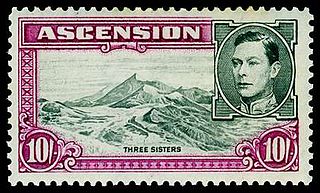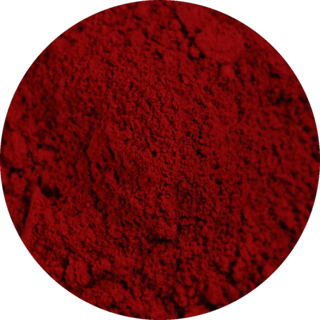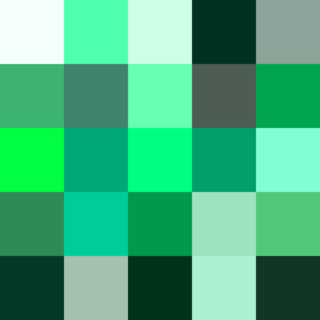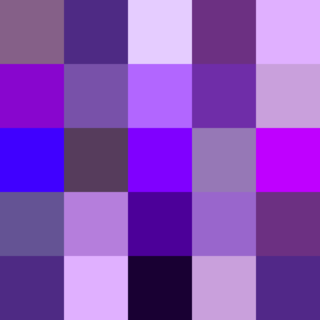
The various tones of the color coral are orange, red and pink representations of the colors of those cnidarians known as precious corals.

Lavender is a light shade of purple or violet. It applies particularly to the color of the flower of the same name. The web color called lavender is displayed adjacent—it matches the color of the palest part of the lavender flower; however, the more saturated color shown as floral lavender more closely matches the average color of the lavender flower as shown in the picture and is the tone of lavender historically and traditionally considered lavender by the average person as opposed to those who are website designers. The color lavender might be described as a medium purple or a light pinkish-purple. The term lavender may be used in general to apply to a wide range of pale, light, or grayish-purples, but only on the blue side; lilac is pale purple on the pink side. In paints, the color lavender is made by mixing purple and white paint.

Lemon or lemon-color is a vivid yellow color characteristic of the lemon fruit. Shades of "lemon" may vary significantly from the fruit's actual color, including fluorescent tones and creamy hues reflective of lemon pies and confections.

Orchid is a bright rich purple color that resembles the color which various orchids often exhibit.

Red-violet refers to a rich color of high medium saturation about 3/4 of the way between red and magenta, closer to magenta than to red. In American English, this color term is sometimes used in color theory as one of the purple colors—a non-spectral color between red and violet that is a deep version of a color on the line of purples on the CIE chromaticity diagram.

Carmine color is the general term for some deep red colors that are very slightly purplish but are generally slightly closer to red than the color crimson is. Some rubies are colored the color shown below as rich carmine. The deep dark red color shown at right as carmine is the color of the raw unprocessed pigment, but lighter, richer, or brighter colors are produced when the raw pigment is processed, some of which are shown below.
Baby blue is a tint of azure, one of the pastel colors.

Spring green is a color that was traditionally considered to be on the yellow side of green, but in modern computer systems based on the RGB color model is halfway between cyan and green on the color wheel.
Taupe is a dark gray-brown color. The word derives from the French noun taupe meaning "mole". The name originally referred only to the average color of the French mole, but beginning in the 1940s, its usage expanded to encompass a wider range of shades.

Sapphire is a saturated shade of blue, referring to the gem of the same name. Sapphire gems are most commonly found in a range of blue shades although they can be many different colors. Other names for variations of the color sapphire are blue sapphire or sapphire blue, shown below.
Jungle green is a color that is a rich tone of medium spring green.

Varieties of the color green may differ in hue, chroma or lightness, or in two or three of these qualities. Variations in value are also called tints and shades, a tint being a green or other hue mixed with white, a shade being mixed with black. A large selection of these various colors is shown below.

Ruby is a color that is a representation of the color of the cut and polished ruby gemstone and is a shade of red or pink.

Varieties of the color red may differ in hue, chroma or lightness, or in two or three of these qualities. Variations in value are also called tints and shades, a tint being a red or other hue mixed with white, a shade being mixed with black. A large selection of these various colors are shown below.

Pink colors are usually light or desaturated shades of reds, roses, and magentas which are created on computer and television screens using the RGB color model and in printing with the CMYK color model. As such, it is an arbitrary classification of color.

The color magenta has notable tints and shades. These various colors are shown below.
Livid is a medium bluish-gray color. This color name comes from the Latin color term lividus meaning "'a dull leaden-blue color', and also used to describe the color of contused flesh, leading to the English expression 'black and blue'". The first recorded use of livid as a color name in English was in 1622.

Varieties of the color blue may differ in hue, chroma, or lightness, or in two or three of these qualities. Variations in value are also called tints and shades, a tint being a blue or other hue mixed with white, a shade being mixed with black. A large selection of these colors are shown below.

Violet is a color term derived from the flower of the same name. There are numerous variations of the color violet, a sampling of which are shown below.

Rose is the color halfway between red and magenta on the HSV color wheel, also known as the RGB color wheel.








